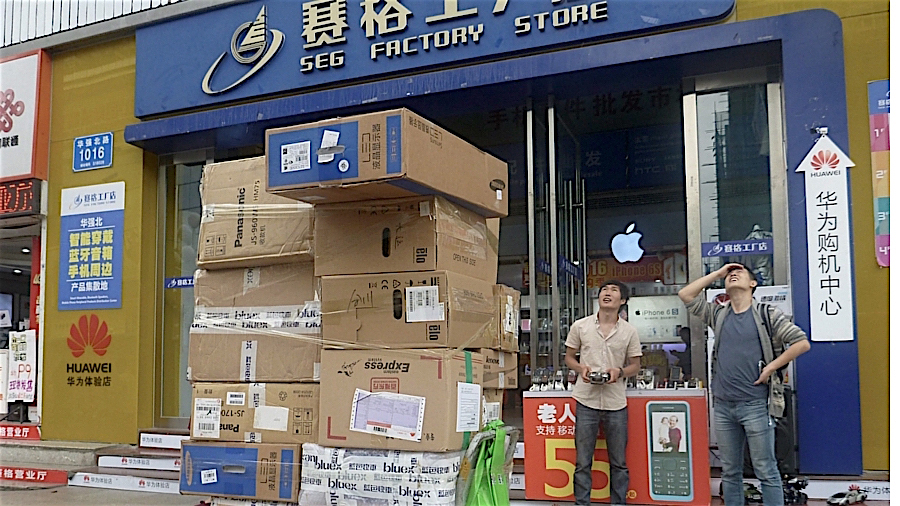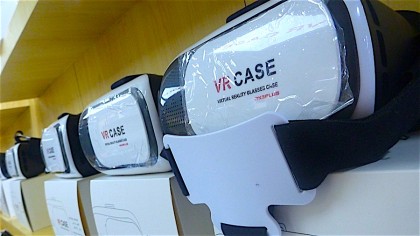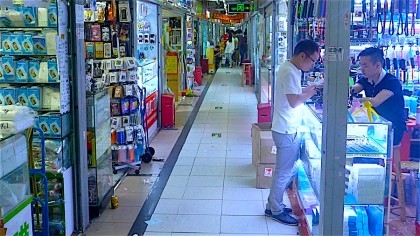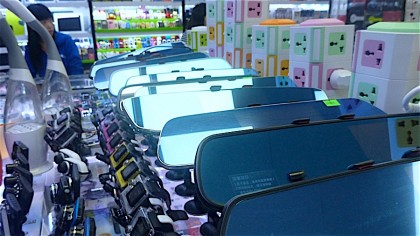A geek's guide to Shenzhen, the global gadget capital
90 percent of the world's electronics are made in this south China city. You need to visit

There are plenty tech towns around the world, but Shenzhen stands out above them all. In the tech world at least, its district of Huaqiangbei is something of an urban legend.
Here in the town the iPhone is made by Foxconn (it's also home to Dell laptops, Microsoft PCs and Sony headphones, among millions of other products), just north of the crossing of Shennon Middle Road and Huaqiang Road in the southern China city of Shenzhen is the epicentre of global electronics.
It's where trends begin, ideas become real, and products get pumped out by the billions. You want a shop dedicated to 3D printers? Have three. A glimpse of the latest virtual reality glasses? Just look in every other store in the vast, labyrinthine floors of the SEG (pronounced 'sage') Electronics Plaza, which is dedicated to gadgetry of all kinds. It's easy to get to; it's on the green Luobao Line, but it's only open between 10am and 6pm.

Street smarts
After the long ride from Hong Kong (OK, it's only 20 miles away, but it takes a few hours to get through immigration), the first glance of Huaqiangbei is nothing special. Down at street level are dozens of phone shops dedicated to Huawei, Xiaomi, Apple, Meizu and Samsung.
"There mustn't be any other stretch of road in the world with so many retail stores dedicated exclusively to the selling of mobile phones," says Ted Rule, author of Shenzhen: The Book, who's seen this mega-city rise from literally nothing in the 1970s.
But it's not just phones. A bloke outside SEG's 70 storey building stands next to box upon box of drones and quad-copters, skilfully piloting one across the street and back while potential buyers smile and ask if they can have a go. Inside SEG the scene is more contemplative, but clinical.

World class buzz
Booths no bigger than six feet across line-up in alleyways stretching into the distance, each packed with VR glasses, VR glasses cases, cameras, dash-cams, external drives, phones, phone cases, a new phone screen, and almost any kind of cheap consumer electronics thing you can dream up.
Sign up for breaking news, reviews, opinion, top tech deals, and more.
"The real mind-blower is the components market on the first couple of floors of the SEG building in Huaqiangbei," says Rule, and he's absolutely right. "Buzzing, exciting, little red and green lights flashing everywhere... it's a world class buzz by any criterion, but it's not unique."
Behind SEG are the niche stores, too: "There's a ten-storey building in a lane parallel to Huaqiangbei which specialises in security and stealth electronics," says Rule. It can leave you reeling, and so could the ultra-low ceilings on the moving walkways that take you down the SEG; I had to duck a foot or more to avoid a massive accident.

Tokyo calling?
With dozens of component markets and electronics stores in this area, it's tempting to make comparisons with Akihabara in Tokyo, but Japan is in fast retreat in the world of electronics; it may lack cult appeal, but Huaqiangbei has global importance.
"Shenzhen's market is probably twenty times bigger than Akihabara," says Benjamin Joffe, General Partner at startup incubator HAX, which is based in Huaqiangbei.
"Japanese geeks, makers and hardware startups come and visit regularly, and are blown away," he adds. HAX is a hardware accelerator that puts entrepreneurs through a 111-day programme to build market-ready products, and it's not based in Huaqiangbei by chance.
"This is the Silicon Valley for electronics with the world's best supply chain," says Joffe. "This allows to prototype faster, cheaper and better, as well as prepare for scaling from one to small batch to large scale production."
Recent products out of HAX in Huaqiangbei include the Auroma One 'coffee science' machine and Revols Bluetooth earphones, which mould yo your ears. Huaqiangbei gives companies a kick onto Kickstarter.

Screwing things together
While Huaqiangbei's vast component markets have a strange allure, they're not where the really big money is.
"What I don't think people realise is that the 'screwing things together' bit no longer drives business," says Rule. "It's R&D, like Silicon Valley has become... you only have to stand in the Metro stations round the main electronics districts at peak hour and watch who's going in and out."
Apple's CEO Tim Cook said in December that the iPhone is made in China because it has more skilled workers, not because wages are low.
Watching the thousands of people carefully fixing phones – perhaps even building them from scratch (such a thing would be perfectly possible to do in Huaqiangbei) – it's difficult to question Cook's reasoning.

Friday night is gadget night
Although Huaqiangbei is the place to go for anyone remotely interested in tech, it's not the only reason Shenzhen is considered China's tech HQ. In the area around the Chegong Miao Metro station is almost exclusively given over to that all-important electronics R&D; it's here that the next big thing is being cooked-up.
"Friday night's the best time to get the buzz as the shopping mall round the metro station is packed with young electronics execs," says Rule.
There are two other areas of note; the clean, green Hi-Tech zone near to Shenzhen University (home to ZTE's HQ) and Bantian, where Huawei has its campus.
"Most of the world's major electronics companies now have a presence in Bantian," says Rule. Foxconn, the biggest manufacturer of iPhones, has its China HQ in Bantian.

Maker's market
Still, back in Huaqiangbei and next door to SEG is the reason why Shenzhen is now home to an army tech entrepreneurs from across the globe.
On the ground floor of the four-storey – but equally as vast – SEG Digital Market is table after table, box after box of components, from tiny screws, printer cartridges and motherboards to capacitors, valves and even tiny 'made for iPhone SE' stickers (new in that day) you find on phone cases.

These are the outlets for the super-factories elsewhere in Shenzhen, and while the staff busily move boxes, fill-out inventories and fulfil orders from across the world (including that USB cable you just bought on eBay), the room as an engine-like feel to it.
It's also here that I spied an ultra-lightweight 'iPhone 5.5' running iOS8. A fake? Almost certainly, but Shenzhen itself is the real deal.

Jamie is a freelance tech, travel and space journalist based in the UK. He’s been writing regularly for Techradar since it was launched in 2008 and also writes regularly for Forbes, The Telegraph, the South China Morning Post, Sky & Telescope and the Sky At Night magazine as well as other Future titles T3, Digital Camera World, All About Space and Space.com. He also edits two of his own websites, TravGear.com and WhenIsTheNextEclipse.com that reflect his obsession with travel gear and solar eclipse travel. He is the author of A Stargazing Program For Beginners (Springer, 2015),